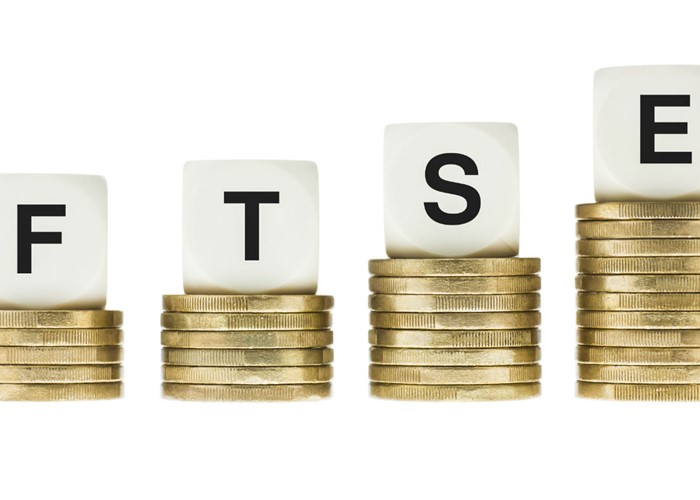The costs of investing in tracker funds

Passive funds are growing in popularity as investors shun expensive fund managers. But how much does it really cost?
Tracker funds, which follow the performance of a chosen index such as the FTSE 100, are a cheap and easy way to invest in the stock market.
These passive funds are cheaper than paying a fund manager to select a basket of shares for you. And while they will never outperform the market, they equally won't massively underperform, as is the case with many actively managed funds.
But while tracker funds are comparitively cheap, costs can still vary significantly, so it’s worth working out which platforms offer the best value for money.
Low-cost investing
The trend for low-cost investing through trackers has been steadily growing in the past year. Figures from the Investment Management Association (IMA) show that number of tracker funds grew to 74,233 in the final quarter of 2013, up from 58,671 the previous year.
Instead of traditional investing through fund managers, which can end badly if the wrong stocks are picked, these funds aim to track the performance of an index, rather than trying to beat it.
They give investors the opportunity to invest across a range of different assets.
Patrick Connolly, spokesperson for Chase de Vere, says investors are putting increasing focus on tracker funds as they become disillusioned with the higher costs and underperformance of many actively managed funds.
However, Justin Modray, founder of Candid Money, points out that it’s important to understand what you’re tracking.
“In some instances, for example smaller company stock market investments, trackers tend not to fare as well as good actively managed funds.
"It also seldom makes sense to invest all your money in stock markets, so consider supplementing with other assets such as corporate bonds, property and commodities that tend not to always move in the same direction as stock markets,” he adds.
The cost of investing in trackers
Most platforms have percentage-based charges which apply to the cash invested in funds, though some cheaper ones have a flat-fee. This is a charge that you will pay on top of the annual management charge (AMC) of the fund itself.
Hargreaves Lansdown, for example, has recently changed its pricing structure for tracker funds. Instead of a monthly platform charge, investors now have to pay a fee of 0.45%.
The following table shows how fees can vary among some of the biggest providers, all based on the example of a tracker fund carrying an AMC of 0.20%.
|
Provider* |
Tracker AMC |
Platform / ISA Charge |
Total cost of £25,000 |
Total cost of £50,000 |
Total cost of £75,000 |
Total cost of £100,000 |
|
Alliance Trust Savings |
0.20% |
£90 |
0.56% |
0.38% |
0.12% |
0.29% |
|
Barclays |
0.20% |
0.35% |
0.55% |
0.55% |
0.55% |
0.55% |
|
FNW |
0.20% |
0.35% |
0.55% |
0.55% |
0.55% |
0.55% |
|
0.20% |
0.45% |
0.65% |
0.65% |
0.65% |
0.65% |
*source: Alliance Trust Savings
It's really important to shop around to ensure you get the best deal, as some examples from Modray make clear.
Investing in the HSBC FTSE 100 fund has an annual cost 0.17%. If you were to invest £10,000 in this through Charles Stanley Direct there would be a fee of 0.25% on top, so 0.42% fees in total per year. But with iWeb, investing in the same tracker would cost a lot less. There is a fee of £25 to open an account, then £5 per deal which is equivalent to 0.20% for the first year and 0.17% for subsequent years.
Another example is the Vanguard FTSE UK Equity Index fund (FTSE All Share), with an annual cost of 0.15% via platforms. Investing £10,000 through Charles Stanley Direct would come with a 0.25% charge on top which brings the total annual charges to 0.40%. However it’s a lot cheaper to go through Interactive Investor with a flat-rate £80 annual fee for eight trades which works out at 0.23% per year.
Modray warns that some trackers have expensive fees, such as the Virgin UK Tracking Index fund which charges a whopping 1% per year. Given your investments are being managed by a computer rather than a fund manager, that's a hefty fee to swallow.
Holding a balanced portfolio
Ensuring your portfolio is well-balanced is key to protecting your investments. Choosing a mixture of active and passive investments can be an effective tool for securing a healthy return.
Most tracker funds will have a high weighting in large companies and it can be hard for actively-managed funds to do well in this sector, explains Connolly. However, this means there is scope for active managers to find opportunities in less efficient areas such as the emerging markets or in small cap companies.
“Therefore, for many investors the best approach could be to hold a combination of active and passive investment funds. Active funds should be held in sectors where the fund manager has a better opportunity to outperform, but passive funds should be considered where outperformance is less likely,” he adds.
What do you think? How much of your portfolio is in passive funds? What sort of charges do you face? Let us know your experiences in the comments box below.
More on investing:
Hargreaves Lansdown backtracks on investment trust charge
Do you care if your money is invested ethically?
Should you invest in Seedrs?
Five ways to invest in UK businesses
Comments
Be the first to comment
Do you want to comment on this article? You need to be signed in for this feature